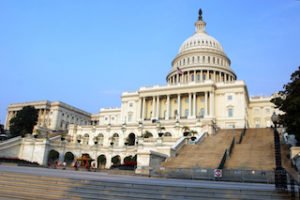The Department of Labor released yet another “request for information” (RFI) on the agency’s controversial fiduciary rule on June 29, this one seeking input on whether or not to delay the Jan. 1, 2018 full implementation date and seeking suggestions for modifying the rule’s major provisions.
The deadline for submitting comments about extending the Jan. 1 applicability date is 15 days from the request’s July 6 publication in the Federal Register – meaning interested parties have until July 21 to comment on that particular topic.
Comments in response to all other questions (more on the questions below) in the RFI must be submitted by Aug. 7, 2017.
The Employee Benefits Security Administration (EBSA) within the DOL published the RFI in connection with its examination of the final rule defining who is a “fiduciary” of an employee benefit plan for purposes of the Employee Retirement Income Security Act of 1974 and the Internal Revenue Code, as a result of giving investment advice for a fee or other compensation with respect to assets of a plan or IRA (Fiduciary Rule or Rule).
The examination also includes the new and amended administrative class exemptions from the prohibited transaction provisions of ERISA and the Code that were published in conjunction with the Rule (collectively, the Prohibited Transaction Exemptions or PTEs). This RFI specifically seeks public input that could form the basis of new exemptions or changes/revisions to the rule and PTEs, and input regarding the advisability of extending the January 1, 2018, applicability date of certain provisions in the Best Interest Contract Exemption, the Class Exemption for Principal Transactions in Certain Assets Between Investment Advice Fiduciaries and Employee Benefit Plans and IRAs, and Prohibited Transaction Exemption 84-24.
Recent event recap
Back on April 7, the DOL promulgated a final rule extending the applicability date of the Fiduciary Rule by 60 days from April 10 to June 9. It also extended from April 10 to June 9, the applicability dates of the BIC Exemption and Principal Transactions Exemption, and required investment advice fiduciaries relying on these exemptions to adhere only to the Impartial Conduct Standards as conditions of those exemptions during a transition period from June 9 through January 1, 2018.
In this manner, the Department established a phased implementation period from June 9 until January 1, 2018, during which time the Fiduciary Rule will be applicable, and these new exemptions will be available subject to the Impartial Conduct Standards only.
The final rule further delayed the applicability of amendments to an existing exemption, Prohibited Transaction Exemption 84-24, until January 1, 2018, other than the Impartial Conduct Standards, which became applicable on June 9, 2017. Finally, the final rule extended for 60 days, until June 9, 2017, the applicability dates of amendments to other previously granted exemptions.
On May 22, the DOL issued a temporary enforcement policy covering the transition period between June 9 and January 1, 2018, during which the Department will not pursue claims against investment advice fiduciaries who are working diligently and in good faith to comply with their fiduciary duties and to meet the conditions of the PTEs, or otherwise treat those investment advice fiduciaries as being in violation of their fiduciary duties and not compliant with the PTEs. The Treasury Department and IRS confirmed a similar enforcement policy covering excise taxes and related reporting obligations with respect to transactions covered by the Department’s enforcement policy. The Department also published on May 22 a set of FAQs to provide additional information on the transition period from June 9 to January 1, 2018. The DOL noted in both the temporary enforcement policy and FAQs that it intended to issue a RFI for additional public input on specific ideas for possible new exemptions or regulatory changes based on recent public comments and market developments.
The DOL is still in the process of reviewing and analyzing comments received in response to its March 2, 2017, request for comments on issues raised in the Feb. 3 memo from President Trump. Now the DOL wants additional input from the public about possible additional exemption approaches or changes to the Fiduciary Rule, as well as regarding the advisability of extending the January 1, 2018, applicability date of certain provisions in the Best Interest Contract Exemption, the Class Exemption for Principal Transactions in Certain Assets Between Investment Advice Fiduciaries and Employee Benefit Plans and IRAs, and Prohibited Transaction Exemption 84-24.
Public input on the Fiduciary Duty Rule and PTEs has suggested that it may be possible in some instances to build upon recent innovations in the financial services industry to create new and more streamlined exemptions and compliance mechanisms.
Questions of interest in the new RFI
The following questions are taken straight from the RFI published on the Federal Register on July 6, but only questions of more specific interest to Insurance Forums members are listed here. To see the complete list of questions the 18 total questions as well as how to submit comments, click here.
• Potential Delay of January 1, 2018 Applicability Date: Would a delay in the January 1, 2018, applicability date of the provisions in the BIC Exemption, Principal Transactions Exemption and amendments to PTE 84-24 reduce burdens on financial services providers and benefit retirement investors by allowing for more efficient implementation responsive to recent market developments? Would such a delay carry any risk? Would a delay otherwise be advantageous to advisers or investors? What costs and benefits would be associated with such a delay?
• General Questions
1. What has the regulated community done to comply with the Rule and PTEs to date, particularly including the period since the June 9, 2017, applicability date? Are there market innovations that the Department should be aware of beyond those discussed herein that should be considered in making changes to the Rule?
2. Do the Rule and PTEs appropriately balance the interests of consumers in receiving broad-based investment advice while protecting them from conflicts of interest? Do they effectively allow Advisers to provide a wide range of products that can meet each investor’s particular needs?
3. During the transition period from June 9, 2017, through January 1, 2018, Financial Institutions and Advisers who wish to utilize the BIC Exemption must adhere to the Impartial Conduct Standards only. Most of the questions in this RFI are intended to solicit comments on the additional exemption conditions that are currently scheduled to become applicable on January 1, 2018, such as the contract requirement for IRAs. To what extent do the incremental costs of the additional exemption conditions exceed the associated benefits and what are those costs and benefits? Are there better alternative approaches? What are the additional costs and benefits associated with such alternative approaches?
• Alternative Streamlined Exemption
1. How would advisers be compensated for selling fee-based annuities? Would all of the compensation come directly from the customer or would there also be payments from the insurance company? What regulatory filings are necessary for such annuities? Would payments vary depending on the characteristics of the annuity? How long is it anticipated to take for an insurance company to develop and offer a fee-based annuity? How would payments be structured? Would fee-based annuities differ from commission-based annuities in any way other than the compensation structure? How would the fees charged on these products compare to the fees charged on existing annuity products? Are there any other recent developments in the design, marketing, or distribution of annuities that could facilitate compliance with the Impartial Conduct Standards?
2. Clean shares, T-shares, and fee-based annuities are all examples of market innovations that may mitigate or even eliminate some kinds of potential advisory conflicts otherwise associated with recommendations of affected financial products. These innovations might also increase transparency of advisory and other fees to retirement investors. Are there other innovations that hold similar potential to mitigate conflicts and increase transparency for consumers? Do these or other innovations create an opportunity for a more streamlined exemption? To what extent would the innovations address the same conflicts of interest as the Department’s original rulemaking?
3. Could the Department base a streamlined exemption on a model set of policies and procedures, including policies and procedures suggested by firms to the Department? Are there ways to structure such a streamlined exemption that would encourage firms to provide input regarding the design of such a model set of policies and procedures? How likely would individual firms be to submit model policies and procedures suggestions to the Department? How could the Department ensure compliance with approved model policies and procedures?
• Incorporation of Securities Regulation of Fiduciary Investment Advice: If the Securities and Exchange Commission or other regulators were to adopt updated standards of conduct applicable to the provision of investment advice to retail investors, could a streamlined exemption or other change be developed for advisers that comply with or are subject to those standards? To what extent does the existing regulatory regime for IRAs by the Securities and Exchange Commission, self-regulatory bodies (SROs) or other regulators provide consumer protections that could be incorporated into the Department’s exemptions or that could serve as a basis for additional relief from the prohibited transaction rules?
• Principal Transactions: Are there ways in which the Principal Transactions Exemption could be revised or expanded to better serve investor interests and provide market flexibility? If so, how?
• Disclosure Requirements: Are there ways to simplify the BIC Exemption disclosures or to focus the investor’s attention on a few key issues, subject to more complete disclosure upon request? For example, would it be helpful for the Department to develop a simple up-front model disclosure that alerts the retirement investor to the fiduciary nature of the relationship, compensation structure, and potential sources of conflicts of interest, and invites the investor to obtain additional information from a designated source at the firm? The Department would welcome the submission of any model disclosures that could serve this purpose.
• Grandfathering: Section VII of the BIC Exemption provides a grandfathering provision to facilitate ongoing advice with respect to investments that predated the Rule, and to enable advisers to continue to receive compensation for those investments. Some commenters thought this provision could be expanded in ways that would minimize potential disruptions associated with the transition to a fiduciary standard and facilitate ongoing advice for the benefit of investors. To what extent are firms and advisers relying on the existing grandfather provision? How has the provision affected the availability of advice to investors? Are there changes to the provision that would enhance its ability to minimize undue disruption and facilitate valuable advice?
• PTE 84-24: If the Department provided an exemption for insurance intermediaries to serve as Financial Institutions under the BIC Exemption, would this facilitate advice regarding all types of annuities? Would it facilitate advice to expand the scope of PTE 84-24 to cover all types of annuities after the end of the transition period on January 1, 2018? What are the relative advantages and disadvantages of these two exemption approaches (i.e., expanding the definition of Financial Institution or expanding the types of annuities covered under PTE 84-24)? To what extent would the ongoing availability of PTE 84-24 for specified annuity products, such as fixed indexed annuities, give these products a competitive advantage vis-à-vis other products covered only by the BIC Exemption, such as mutual fund shares?
SEE ALSO:













